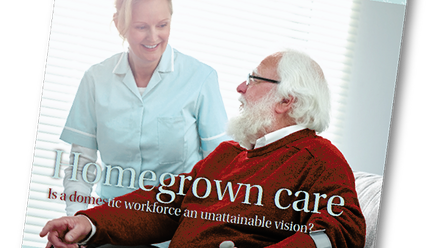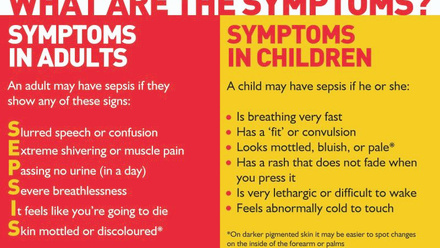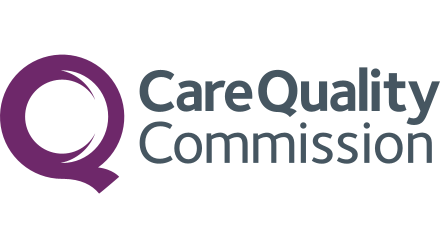Fire safety for homecare providers: Questions and Answers
Updated 17 September 2025
This is a resource for members of the Homecare Association developed with support from the National Fire Chiefs Council (NFCC) and London Fire Brigade.
Introduction
The likelihood of having a fire in the home and dying in a fire generally increases with age and other vulnerability factors. Homecare providers can play a vital role in helping to reduce the number of fires, deaths and injuries. We advise homecare providers to complete an Initial fire risk checklist for domiciliary care providers, with their service user to identify fire risk behaviours or items. You can download this as a record of the assessment and take any immediate measures to reduce risk as outlined in this guidance.
After you have completed the checklist and taken any immediate measures, if you still have concerns about fire safety, we advise you complete an Online Home Fire Safety Check with the service user's permission.
You can also contact your fire and rescue service directly and your fire service may arrange for an in-person visit. All fire services have arrangements in place to visit people at home and advise them on reducing fire risks.
Find your fire service Fire England by entering a postcode
Find your local fire and rescue service | GOV.WALES
Questions from homecare providers
The following questions and answers on fire safety, as it relates to homecare, are based on questions posed by members to the Homecare Association helpline.
We are grateful to the London Fire Brigade, who have a specialist liaison unit on social care provision, and to NFCC for their answers and advice for our members on this vital topic.
What are the training requirements for careworkers?
This is the Skills for Care’s Care Certificate Standard 13 which concerns Health and Safety:
| Standard 13: Health and Safety | |
| Outcome – The learner is able to: | Assessment – The learner must: |
| 3.7 Promote fire safety | 13.7a Explain how to prevent fires from starting or spreading |
| 13.7b Describe what to do in the event of a fire | |
This means workers should be able to identify fire risk behaviours or hazards in their service users' home, explain how to prevent fires from starting or spreading, and what to do if there is a fire in their home.
Although the Care Certificate Standards are the minimum standards that should be covered as part of induction training of new care workers in England, providers throughout the UK will want to conduct similar training for their existing staff.
Here is a link to The Care Certificate Standards (skillsforcare.org.uk).
What does fire prevention mean for people receiving care in their own home?
Homecare providers and care workers can pass on their understanding of how fires start, identify risks in their clients' homes and help prevent fires from starting. Where risks are identified, homecare managers should work with the service user and the service commissioner to put in preventative measures. These include:
- Smoking – Smoking is the biggest cause of fire deaths. Fire Services are especially concerned about those that smoke in bed or in an armchair and are less mobile or tend to fall asleep whilst smoking. Care workers should look out for burn or scorch marks on bedding, furniture, carpets or clothing and report these to their manager immediately to agree what measures to take to reduce the risk.
- Fire services promote smoking cessation or vaping (if this can be done safely - there is information about the fire risks of vaping and e-cigarettes) as an alternative to smoking cigarettes, cigars or pipes. If a service user wishes to continue smoking, advise them that it is safer to smoke outdoors if they can. A safety lighter (which goes out when dropped) should be used instead of matches. Make sure cigarettes are fully extinguished in a deep ashtray and care worker should not facilitate smoking in bed.
- People who are bed or chair-restricted are at much higher risk of fire when combined with smoking. Ash or embers can land on their bedding, furniture, clothing or incontinence products and start a fire. It may be appropriate to advise the service user to have fire retardant bedding, throws and aprons which will reduce the risk from dropped cigarettes onto bedding, furniture or clothing. The care manager can help the individual obtain these items.
- Medical devices and products Fabrics which have dried on emollient creams are more flammable regardless of paraffin content or if paraffin free. People wearing fabrics which have absorbed emollient creams should avoid naked flames, heat sources and smoking. Remember that emollients can also be absorbed by bandages and bedding. Switching to a different emollient will not reduce the risk as all emollients when dried onto fabrics are flammable. Fire and rescue services can advise on mitigation measures which may include fire retardant bedding but be aware these products will need to be regularly replaced as emollient build-up will reduce their effectiveness. Telecare and water mist systems may be appropriate for high-risk individuals and again a fire service can provide advice.
- Service users should be advised against using electric blankets with air flow pressure relief mattresses.
- Cooking – More fires start in the kitchen than anywhere else in the home. Advise the service user not to leave their cooking unattended or cook when drowsy or after drinking alcohol. They should also take care when wearing loose clothing. If the oven, hob, cooker hood or grill have a build-up of fat and grease, this could ignite and cause a fire. Care workers should report this to their manager.
- Candles –Service users should be discouraged from using candles and, if they wish to continue, advised to use a suitable candle holder which is placed on a stable surface away from curtains, furniture and clothes. In all circumstances candles should be put out before leaving the room or sleeping.
- Portable heaters – Care workers should advise the service user to locate portable heaters against a wall to stop them falling over, keep them away from clothes and furniture and never use them for drying clothes. It is recommended that heaters are turned off and allowed to cool before they are moved. People should be advised that portable heaters are placed at least one metre away from any furniture, bed. Regular servicing of portable heaters is highly recommended.
- Electrics – Scorch marks, flickering lights, hot plugs and sockets and fuses tripping for no reason could all be signs of loose or dangerous wiring. Care workers should report any of these signs to their manager. Appliances used while providing care should be clean and in good working order. The fluff from tumble dryer filters should be removed where a care worker's duties include carrying out the laundry. If using a cable drum extension lead, care workers should make sure it is completely unwound before use. Electrical sockets and extension lead must not be overloaded. Electrical Safety First has a useful tool with more information here :Overloading Sockets | Electrical Safety First.
- Careworkers should advise service users to always use chargers that come with their phone, tablet, e-cigarette or mobile device and not to leave items continuously on charge. Items should not be left charging on a bed or soft furnishings, or left charging overnight.
- People should not buy counterfeit electrical goods or use faulty items, which can increase fire risks. Check here to find out whether any electrical appliances or white goods have been recalled by the manufacturers and sign up for product email alerts: Product Recalls and Alerts - GOV.UK (www.gov.uk). NFCC advise any new electrical products are registered with the manufacturer so people can be quickly alerted if a repair or recall is needed.
More fire safety tips can be found on the Fire England website or take a look at your local fire service website.
What if a careworker identifies a fire risk in a service user’s home?
Where a risk has been identified, the care worker should take action by recording the risk and reporting it to their manager especially where, for example, there are signs of unsafe disposal of cigarettes/smoking materials or burn and scorch marks on clothing or bedding. The care worker and their manager should agree if immediate measures can be taken to reduce the risk such as advising the client, and/or any of their family members, about adopting safer smoking habits, or using safer smoking items discussed above.
The manager should arrange for an Initial fire risk checklist for domiciliary care providers to be completed.
It is important to engage with your local fire and rescue service for advice and support. Contact your fire and rescue service directly or via by completing an online home fire safety check www.ohfsc.co.uk . With the person’s permission a visit from your fire service can be arranged if necessary. It’s important that a family member or care worker is present to provide support at the visit and information and advice to prevent a fire can be implemented. If a person does not wish to have an in person visit the online home fire safety check will provide useful information and a plan which can help reduce the risk of fire.
Service users should be advised that it is good practice to keep internal doors closed to help prevent the spread of smoke and fire in the event of an incident. Care workers should ask whether they can close the doors before they leave the service user's home.
Where the person is living with others or in a multi-occupied building, such as shared housing, supported living, bedsits or flats, the care worker should ensure that doors are fully closed when leaving to stop a fire spreading into any corridor or stairs.
More fire safety tips that all should be aware of can be found on the Fire England website How to protect your home from fire | Fire England
Fire safety for carers | Fire England
And for those people living in blocks of flats Fire safety in blocks of flats | Fire England
What should careworkers do if there is a fire?
It is very unlikely that a fire will occur in a service user’s property simultaneously to a care visit. However, in the event of fire, care workers should help the service user to evacuate their property, if safe to do so, and Call 999. If the service user lives in shared housing, supported living, bedsits or flats the carer must also raise the alarm. If there is a fire in another part of the building or if a fire alarm is sounding the care worker and service user should follow the emergency instructions for the building which in some cases may be to ‘stay put’ in their home. In some cases, the service user may also have a ‘Personal Emergency Evacuation Plan’ or care plan in place which will provide advice on safe movement techniques, evacuation equipment, and whether they should move to a refuge, place of safety or outside the building.
Contact your local fire service and find out what support and training is available.
In addition, Age UK has a presentation on fire safety for family carers.
Is it safe to leave a service user’s gas fire on overnight?
A service user asked that their gas fire is left on overnight to ensure their house was warm enough in cold weather. The care provider was not sure this was safe and asked the Homecare Association helpline if there was an alternative way of ensuring that the service user does not get hypothermia.
London Fire Brigade advised that care workers can help the person to feel comfortable, and gave some fire safety tips that could help reduce the risk of a fire:
Ideally heaters should not be left on at night. To reduce risk, discuss with the person alternative means of heating such as a hot water bottle, extra blankets, warm night clothes or providing an oil filled radiator. If the person still wants to have a portable heater on at night, the risk of fire can be reduced by ensuring that the heater is at least one metre away from the service user, and away from bedding, clothing, soft furniture and stored incontinence products.
Further information on keeping warm is available from the Energy Saving Trust and the NHS.
What are homecare providers’ responsibilities for fire risk assessment?
Homecare providers are not directly responsible for the premises where they provide care, either because it is the person's own home, or because it might be sheltered living where another organisation looks after the property. Nevertheless, providers have a duty of care for their care workers and are also required to provide care in a safe way.
To comply with regulation 12 of the Health and Social Care Act 2008 (Regulated Activities) Regulations 2014, registered persons must assess the risks to the health and safety of people being supported by homecare services and do all they reasonably can to mitigate any such risks. There is more about this in the CQC Provider Guidance. The use of a Person-Centred Fire Risk Checklist to identify hazards and risks and taking steps to control these as described above will provide evidence of this.
The London Fire Brigade’s person-centred fire risk assessment checklist is a short five question form to help providers assess whether there is an increased risk of fire – it can help you decide if a Home Fire Safety Visit is needed.
A referral to the local fire service for a Home Fire Safety Visit should be made where someone is assessed to be at increased risk from fire.
Any agreed fire reduction actions should be included on the individual’s care plan, for example, that electrical appliances with worn leads should be replaced or that flame retardant bedding should be used.
If an individual who has mental capacity does not consent to a visit from the fire service or does not agree with recommended actions to reduce risks, the risks identified by the care provider and the individual’s refusal should be recorded. The reasons for the individual not wishing to have a visit or safety measures enacted should be explored and the providers’ concerns about the risks should be explained to the individual. Ideally, the care provider should find a way of assessing and mitigating risks that can be mutually agreed upon.
However, if a solution cannot be found, and the situation causes the care provider concern about the safety of the individual or others (e.g. neighbours, other family members, persons living with them), they should share their concerns with the building manager or owner (if this is someone other than the individual), family, commissioning team and/or local authority safeguarding team as appropriate.
Are petroleum or paraffin based emollients safe to use?
There is an increased risk of fire where individuals use any type of emollient not just those containing petroleum or paraffin. If clothing, bedding or dressings with dried on emollient come into contact with an ignition source such as a candle, smoking products or cooking appliances, a fire will burn more rapidly as the fabric can act as a ‘wick’. It is important that people receiving homecare services, and their carers are aware of the risks. Providers should take all reasonable steps to reduce risk such as arranging for the frequent changing of dressings and regular laundering of textiles to be added to the care plan.
Emollients will also dry onto into flame retardant materials and can nullify the flame retardant properties
The National Fire Chiefs Council has worked with the Medicines and Healthcare Regulatory Authority (MHRA) regarding warnings on packaging of emollient products to alert users to any potential risks.
More information about the joint NFCC/MHRA campaign to raise awareness of fire risks of emollients can be found on the Know the Fire Risk webpage on the NFCC website. Scroll down to read homecare sector-specific information: ‘Reducing Risk: Information for Carers and Support Workers’. This includes:
- A video which gives advice on fire risks posed by emollient creams dried-on to clothing, bandages and bedding: NFCC Carers advice Emollients on Vimeo. This contains information to share with care teams - they should be aware that emollients with or without petroleum/paraffin carry a fire risk, and not all packaging contains a warning. (Please note some video content is distressing, with discussion about fatalities). A Welsh version is available at: Final Welsh carers emollient video on Vimeo.
- A NFCC Initial fire risk checklist for domiciliary care providers, developed specifically for our sector, which contains advice on fire safety in the home.
- A link to an Online home fire safety check which provides a route for care providers to refer individual cases to local fire services for advice, with their consent.
Homecare Association members can also download the document: Emollient skin creams - Guidance for Homecare Providers.
How can emollients be safely reduced from clothes or bedding?
It is recommended that bedding and clothing should be washed regularly at the highest temperature recommended by the fabric care instructions. This will help reduce the build-up of dried on emollients but will not completely remove it. The fire risk will remain.
Sources of further information
The National Fire Chiefs Council has produced:
- Fire risk checklist for domiciliary care providers - NFCC.
- A Know the Fire Risk - NFCC webpage which has a section on emollient safety called Reducing Risk: Information for Carers and Support Workers (scroll down to read). This includes a video resource developed to help domiciliary care providers and support workers understand and reduce the fire risks linked to emollient use when providing care in people’s homes. (Please note some of the content is distressing as it discusses fatalities.)
There is also an Online home fire safety check which provides a route for care providers to refer individual cases to the local fire service for advice, with their consent.
Other sources of information:
Care Quality Commission: Regulation 12: Safe care and treatment
Fire England Fire Safety in the Home
Fire England Fire safety for Carers
London Fire Brigade Advice on caring for older people
NFCC Know the Fire Risk – Emollient advice
London Fire Brigade Advice for careworkers using emollient creams
London Fire Brigade Fire Risk Check List
London Fire Brigade Caring for smokers
Means of escape for disabled people (HM Government)
Skills for Care: The Care Certificate Standards
Homecare Association: Emollient skin creams - Guidance for Homecare Providers
Disclaimer






